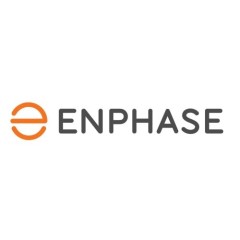Market Pulse
In a profound shift signaling the accelerating convergence of traditional finance (TradFi) and the digital asset ecosystem, institutional players are increasingly turning their attention to tokenized Real-World Assets (RWAs). This emerging paradigm leverages blockchain technology to represent ownership or value of tangible and intangible assets – from real estate and government bonds to private equity and fine art – as digital tokens. The movement promises to unlock unprecedented liquidity, efficiency, and transparency in markets historically hampered by cumbersome processes and limited accessibility, marking a critical new chapter in the broader adoption of blockchain.
Understanding Tokenized Real-World Assets
Tokenized Real-World Assets are digital representations of off-chain assets on a blockchain. This process involves legally binding mechanisms to link the digital token to the physical asset, ensuring that ownership rights and obligations are clearly defined and enforceable. The core appeal of RWAs lies in their ability to translate the benefits of blockchain – immutability, programmability, and global accessibility – to a vast array of existing assets.
- Enhanced Liquidity: By fractionalizing high-value assets (like a skyscraper or a rare painting) into smaller, tradable units, RWAs make them accessible to a wider pool of investors, improving market depth and liquidity.
- Increased Transparency: Blockchain ledgers provide an immutable record of ownership and transaction history, reducing fraud and increasing trust among participants.
- Reduced Costs and Efficiency: Smart contracts can automate many manual processes involved in asset management, transfer, and settlement, significantly cutting down on intermediary fees and operational overhead.
- Global Access: Tokenized assets can be traded 24/7 on a global scale, breaking down geographical barriers that traditionally limit investment opportunities.
The Institutional Imperative: Why TradFi is Leading the Charge
While the concept of tokenization isn’t new, the current surge in institutional interest is driven by a confluence of factors, primarily the pursuit of operational efficiency, new revenue streams, and improved client offerings. Major financial institutions, including investment banks, asset managers, and even central banks, are actively exploring or piloting RWA projects.
Their motivations are clear:
- Operational Efficiencies: Replacing outdated, manual processes with blockchain-based automation can streamline everything from asset issuance to settlement, reducing human error and accelerating transaction times.
- New Product Innovation: Tokenization allows for the creation of innovative financial products, such as bespoke structured notes, collateralized loans using tokenized assets, or even new forms of securitization previously unfeasible.
- Market Expansion: Tapping into global investor bases and offering fractional ownership allows institutions to broaden their reach and attract capital for assets that were once niche or illiquid.
- Cost Reduction: By disintermediating aspects of the value chain, institutions can lower costs associated with custodianship, legal documentation, and administrative overhead.
Technological Underpinnings and Regulatory Roadblocks
The successful implementation of tokenized RWAs relies heavily on robust blockchain infrastructure. While public blockchains like Ethereum and Solana are often discussed, many institutional RWA projects are exploring permissioned blockchains or hybrid models that offer greater control over participant access and data privacy. Smart contracts are central to defining the terms of ownership, automating payouts, and enforcing legal agreements.
However, significant hurdles remain, particularly in the regulatory and legal domains. The lack of harmonized global standards for tokenized securities, property rights, and cross-border transactions presents a complex challenge. Institutions require clear guidance on:
- Legal Enforceability: How are tokenized ownership rights recognized and enforced in various jurisdictions?
- Regulatory Compliance: Adhering to KYC/AML regulations, securities laws, and consumer protection frameworks across different markets.
- Interoperability: Ensuring seamless interaction between different blockchain networks and with existing legacy financial systems.
- Custody Solutions: Developing secure and compliant methods for custodying tokenized assets, especially for institutional-grade investors.
Conclusion
The tokenization of real-world assets represents perhaps the most tangible and impactful application of blockchain technology to date for traditional finance. As institutions continue to navigate the complexities of this nascent field, the potential for a more liquid, efficient, and globally accessible financial system becomes increasingly apparent. While challenges surrounding regulation, legal frameworks, and interoperability persist, the foundational work being laid today suggests that tokenized RWAs will be a cornerstone of the financial landscape for decades to come, bridging the gap between digital innovation and centuries of established asset classes.
Pros (Bullish Points)
- Enhances liquidity for illiquid traditional assets like real estate and private equity.
- Increases transparency and reduces operational costs through blockchain automation.
Cons (Bearish Points)
- Faces significant regulatory hurdles across different jurisdictions.
- Requires robust legal frameworks for asset ownership and enforcement of tokenized rights.
Frequently Asked Questions
What is a Tokenized Real-World Asset (RWA)?
An RWA is a tangible or intangible asset from the traditional financial world (e.g., real estate, bonds, commodities) that has its ownership or value represented on a blockchain as a digital token.
Why are institutions interested in RWAs?
Institutions are drawn to RWAs for their potential to offer increased liquidity, fractional ownership, reduced transaction costs, enhanced transparency, and new investment product innovation.
What are the main challenges for RWA adoption?
Key challenges include developing clear and harmonized regulatory frameworks, ensuring legal enforceability of tokenized assets, managing cybersecurity risks, and achieving interoperability between different blockchain networks and traditional systems.



